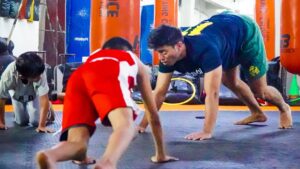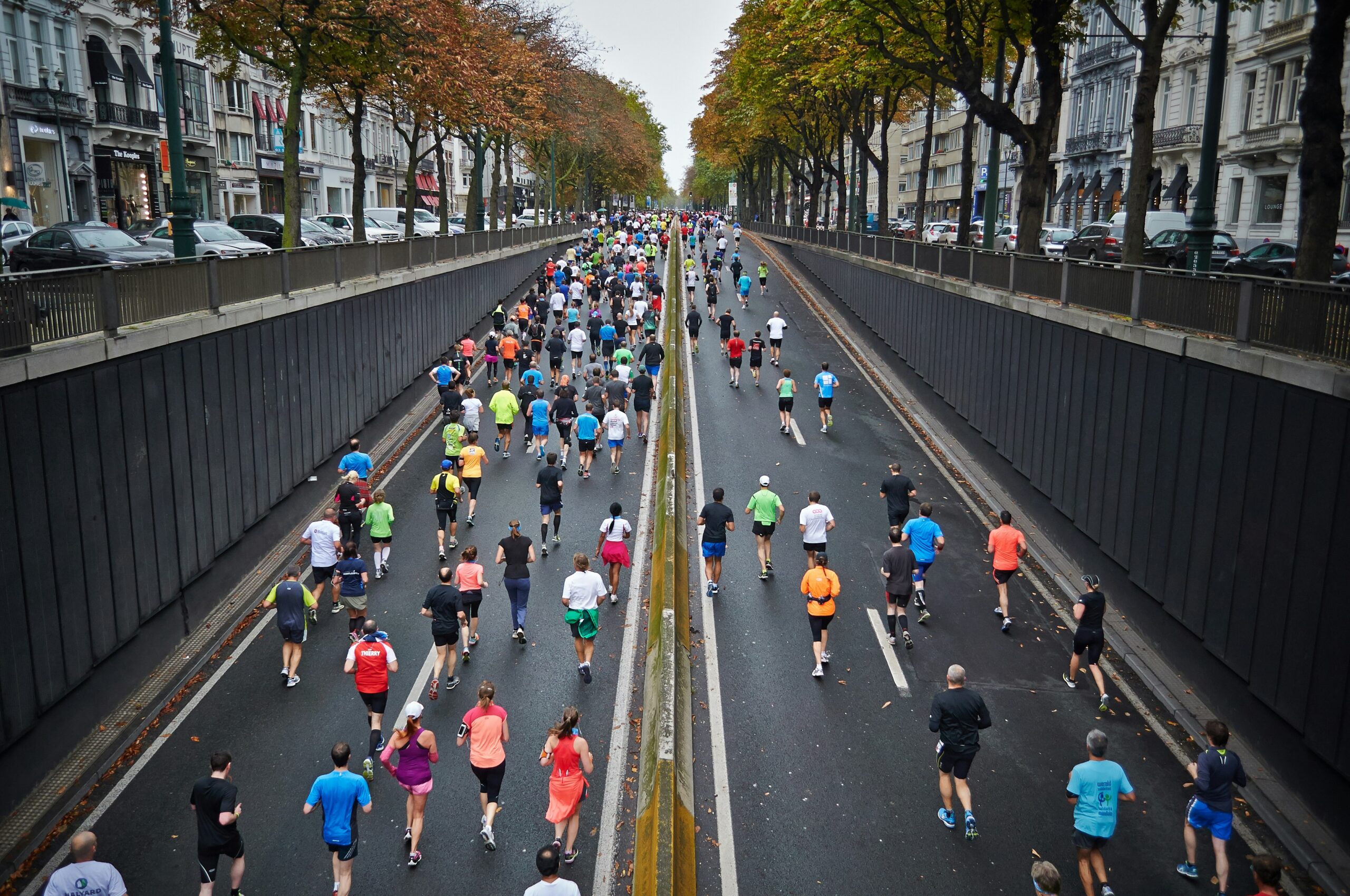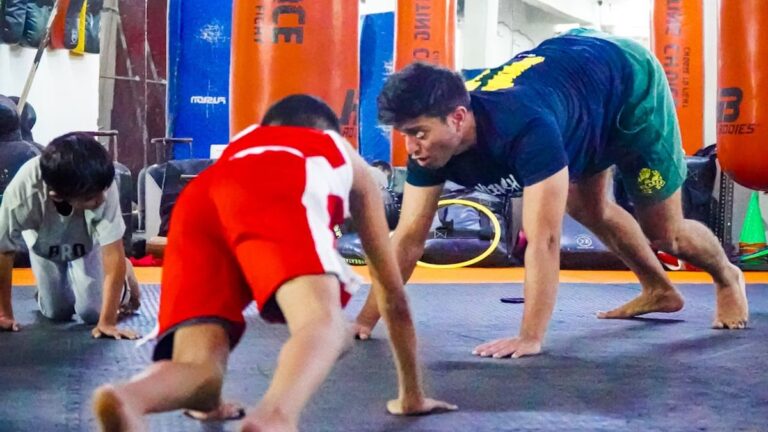Embracing Mindfulness in Your Workout Routine for Enhanced Performance
Have you ever found yourself halfway through your workout, gasping for breath, yet your mind is wandering off to your grocery list or last night’s episode of that series everyone is raving about? If you’re nodding in agreement, you’re not alone. In our hyper-connected world, it’s easy to get caught up in the whirlwind of thoughts while our bodies are physically pushing through an exercise routine. But what if I told you that embracing mindfulness could transform not just your workout, but also your overall performance and wellbeing?
Mindfulness, that buzzword we often hear tossed around in yoga studios and wellness blogs, isn’t just a fad. It’s a practice that has roots deep in ancient traditions and is as relevant today as it ever was—especially when it comes to enhancing athletic performance. By focusing on the present moment, not only can we elevate our fitness game, but we can also cultivate a more profound connection between mind and body. So, let’s dive into the intricate world of mindfulness in workouts, exploring its benefits, practical applications, and how it can lead to enhanced performance both in the gym and beyond.
Understanding Mindfulness: A Brief Overview
To start, let’s break down what mindfulness truly means. At its core, mindfulness is the practice of being fully present in the moment, aware of your thoughts, feelings, and bodily sensations, without judgment. Jon Kabat-Zinn, a pioneer in the field of mindfulness-based stress reduction, succinctly defines it as “paying attention in a particular way: on purpose, in the present moment, and nonjudgmentally.”
Now, while this may sound straightforward, in practice, it can be quite challenging. Our minds often flit from one thought to another like a butterfly in a wildflower garden. When applied to workouts, mindfulness can help us harness that wandering mind and direct our focus to the task at hand—whether it’s lifting weights, running, or practicing yoga.
The Science Behind Mindfulness and Performance
Let’s get a little scientific for a moment (don’t worry, I’ll keep it light). Numerous studies have shown that mindfulness can significantly impact physical performance by improving focus, reducing anxiety, and enhancing recovery. For instance, a study published in the Journal of Sports Psychology found that athletes who practiced mindfulness demonstrated better concentration and less performance anxiety compared to those who didn’t.
Another interesting piece of research showed that mindfulness can actually change the structure of our brains over time. Regular practice can increase gray matter density in areas associated with emotional regulation and cognitive processing. So, not only can mindfulness help you crush your next workout, but it can also give your brain an upgrade! (Now, if only it could help me remember where I put my keys…)
Benefits of Mindfulness in Your Workout Routine
Alright, so we’ve established that mindfulness is more than just a trendy term tossed around in yoga classes. But what exactly are the tangible benefits of incorporating mindfulness into your workouts? Let’s break it down:
- Enhanced Focus: Mindfulness helps you concentrate on your movements, ensuring proper form and technique. This not only maximizes your workout but also reduces the risk of injury.
- Increased Enjoyment: By being present in the moment, you may find yourself enjoying your workouts more. It’s like savoring a delicious meal instead of rushing through it.
- Stress Reduction: Regular practice can lower cortisol levels (the stress hormone) in your body, helping you feel more relaxed and centered.
- Better Recovery: Mindfulness has been shown to improve recovery times by promoting relaxation and reducing muscle tension.
- Boosted Motivation: Mindfulness helps you reconnect with your intrinsic motivations for working out, reigniting that initial passion that may have faded over time.
Now, that’s a pretty compelling list, don’t you think? And I haven’t even begun to scratch the surface of how mindfulness can enhance performance in specific sports or activities. But before we get into the nitty-gritty of applying mindfulness techniques, let’s take a moment to reflect on the various ways we can incorporate it into our daily routines.
Incorporating Mindfulness into Your Workout Routine
So, how can you embrace mindfulness in your workout routine? It’s simpler than you might think. Here are some practical techniques to help you get started:
1. Start with Your Breath
Breathing is the foundation of mindfulness. Before you even lace up your sneakers, take a few moments to focus on your breath. Close your eyes and inhale deeply through your nose, letting your belly expand, and then exhale slowly through your mouth. Repeat this for a few minutes. This not only centers your mind but also prepares your body for the physical activity ahead.
2. Set an Intention
Before each workout, set a clear intention for what you wish to achieve. It could be something as simple as “I want to enjoy this workout” or “I aim to focus on my form today.” Having a guiding intention can help keep you anchored in your practice.
3. Tune In to Your Body
During your workout, pay attention to how your body feels with each movement. Notice the tension in your muscles, the rhythm of your breath, and the sensations coursing through you. If you find your mind drifting, gently bring it back to your body. (I often remind myself—“Hey, legs, you’re doing great! Keep it up!”)
4. Use Mindful Movement
Whether you’re running, lifting weights, or practicing yoga, approach each movement with mindfulness. Rather than just going through the motions, be fully engaged. Feel the ground beneath your feet, the weight in your hands, and the stretch in your muscles. This can turn a mundane workout into a powerful meditation in motion.
5. Reflect Post-Workout
After your session, take a moment to reflect on how you felt. Did you achieve your intention? What did you notice during your workout? Journaling these experiences can help reinforce your mindfulness practice and allow you to track your progress over time.
Mindfulness Techniques for Specific Workouts
Now, let’s get a little more specific. Different forms of exercise lend themselves to various mindfulness techniques. Here are some tailored tips for a few popular workout styles:
Yoga
Yoga and mindfulness are practically best friends. In your yoga practice, focus on each pose, noticing how your body aligns and how your breath flows with the movement. Consider using a mantra or affirmation for added focus—something like “I am strong, I am present.” This can deepen your connection to both your body and your mind.
Running
If you’re a runner, try what’s called “mindful running.” Instead of zoning out with music or podcasts, engage with your surroundings. Listen to the sound of your feet hitting the pavement, feel the wind on your skin, and pay attention to the rhythm of your breath. It turns your run into a sensory experience rather than just a means to an end.
Weight Training
When lifting weights, practice mindfulness by concentrating on each repetition. Visualize the muscles working, and mentally connect with each form. Instead of mindlessly counting reps, focus on the quality of each lift. Remember, it’s not just about lifting heavy—it’s about lifting mindfully.
Team Sports
For those involved in team sports, mindfulness can improve your concentration during plays and enhance teamwork. Practice being present with your teammates, listening actively, and communicating openly. When you’re fully engaged, it not only benefits your performance but also fosters better camaraderie.
Common Challenges and How to Overcome Them
As with any new practice, integrating mindfulness into your workouts can come with its own set of challenges. Here are a few common hurdles and how to tackle them:
1. Wandering Mind
It’s completely normal for your mind to wander—especially in the age of constant distractions. When you catch yourself drifting off, gently guide your focus back to your breath or the sensations in your body. Acknowledge the thought and let it pass without judgment.
2. Frustration with Slow Progress
Mindfulness isn’t about achieving perfection—it’s about being present. If you find yourself frustrated with your progress, take a step back and remind yourself that every workout is a step toward improvement. Celebrate small victories!
3. External Distractions
Sometimes, the world around us can be chaotic—loud gyms, bustling streets, or even a noisy home. If external distractions are getting in the way, consider using earplugs or noise-canceling headphones, or simply find a quieter space where you can focus.
The Long-Term Impact of Mindfulness on Fitness
Looking beyond immediate benefits, the long-term impact of embracing mindfulness in your workouts can be profound. Not only does it enhance your physical performance, but it also contributes to a healthier mindset. Regular mindfulness practice can lead to improved emotional resilience, reduced anxiety, and a deeper understanding of your body’s needs.
I remember when I first started incorporating mindfulness into my routine. It was a game changer. What used to be a struggle to get through workouts transformed into a mindful journey of self-discovery. I began to appreciate the nuances of each movement and the empowerment that came with it. I even found myself looking forward to my workouts instead of dreading them!
Conclusion: A Mindful Path to Enhanced Performance
As we wrap up this exploration of mindfulness in workouts, it’s essential to remember that the journey is just as important as the destination. Embracing mindfulness isn’t about achieving perfection; it’s about cultivating a deeper connection with ourselves and our physical practices. With every breath, every lift, and every step, we can discover new layers of strength and resilience.
So, the next time you step into the gym, hit the trail, or roll out your yoga mat, take a moment to breathe, set your intentions, and be fully present. You might just find that this simple shift can lead to extraordinary results—not just in your performance, but also in your overall well-being. And who knows? You might even rediscover the joy in movement that you thought was lost.
Now, if you’ll excuse me, I’m off to practice some mindful stretching (and maybe finally find those elusive keys). Happy sweating!













